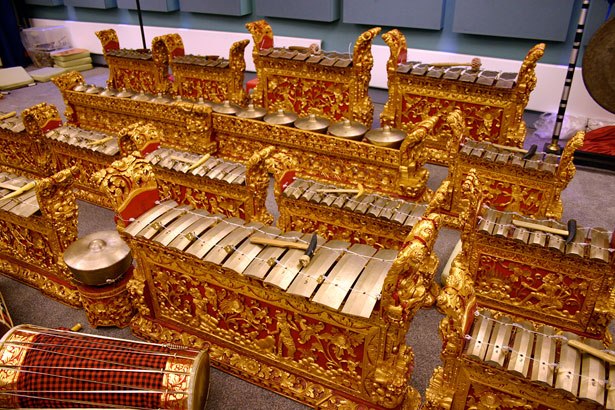Bali Sacred Day Music
Balinese community belongs to the religious one. In other word, all social activities are at all times based on the Hindu teachings. In the calendrical system, there is a term “Tumpek” in Bali falling once in every 210 days as the summit moment of the God’s endowment to human beings

Tumpek Landep is marked with the symbol of kris dagger (weapon) having the meaning to sharpen the intellectuality of Balinese humans. Tumpek Wariga and Tumpek Uye are indicated with the symbol of appreciation towards the bio-life of which conservation should be maintained, as it becomes the wellspring for the survival of human life. Tumpek Kuningan is a moment of introspection on dharma (the eternal law of the cosmos) to remind the human beings so they Endeavour to achieve the profane and spiritual serenity. Tumpak Wayang is an appreciation toward the values of art coming in the expression of beauty and nobility. Tumpek Krulut is the veneration of God coming down to earth in his manifestation as Shiva Nataraja as creator of the universe presenting the sound, namely sets of gambelan instrument.
Tumpek Krulut is derived from lulut meaning harmony and concord. This meaning is manifested into the combination of musical elements consisting of the fusion of rhythm, melody, harmony and dynamic. Blend of these elements essentially reflects the relationship of human life to several expertise and professions however; they remain to be socially integrated.
In Denpasar, particularly at Tenten Hamlet, the celebration of Tumpek Krulut takes place joyously. Local people assemble together at village hall to attend several ritual processions. Various gambelan music compositions are played, such as the angklung, gong and semar pegulingan. By playing those gambelan instrument, the Hindu devotes welcome the presence of Lord Siva who endows the harmony of the world.
Celebration of Tumpek is a right moment to invoke the taksu (inner power) to the Almighty God in his manifestation as Lord Siva. All gambelan compositions, mask and barong are given rituals to unite the perspective of time and daily time (sekala) and perspective of space and sacred time (niskala). Expected, celebration of this tumpek is a moment of harmonic revitalization for human beings in general and Bali community in particular.














